Plan for places to visit in Kailash Mansarovar and make your divine trip more blessed and special. The whole region is mesmerizing to the eyes and sou
Plan for places to visit in Kailash Mansarovar and make your divine trip more blessed and special. The whole region is mesmerizing to the eyes and soul.
Himalayan shamans and Hindus revere Lake Manasarovar more than Buddhists. Shamans believe that the lake’s holy water cleanses the pollution of being born from a human womb. You’ve probably wondered what to do during your Kailash Mansarovar Yatra. Lord Shiva devotees undertake the Kailash Mansarovar Yatra, one of Asia’s most difficult treks. One of India’s five most important pilgrimage destinations, the Kailash Mansarovar Yatra, is a journey to seek relief from anxiety, ego, and meanness. This religious site has some incredible tourist attractions as well as religious significance.
Places to Visit in Kailash Mansarovar
Yam Dwar
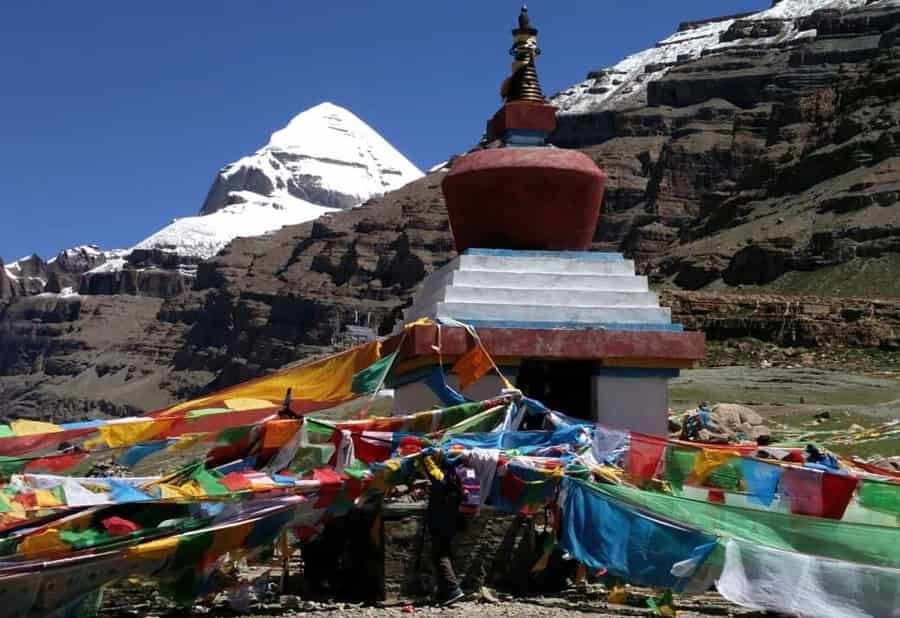
Mount Kailash, the spiritual center of the world and the most appealing destination for divinity seekers, is a highly legendary mountain best known as Lord Shiva’s heavenly abode for Hindus and the birthplace of religion for Jainism. Many popular destinations surround the majestic Mount Kailash, but the Yam Dwar is thought to be the one associated with heaven and souls. The Yama Dwar as a whole is the ‘Gateway of Salvation,’ with Yam as the lord of death and Dwar as a gate. It is the gateway to Lord Shiva’s heavenly abode, and it is open to all pilgrims seeking a once-in-a-lifetime experience. Pilgrims must pass through Yam Dwar in order to visit Mount Kailash, which is in desperate need of repair.
Tarboche is Yam Dwar’s Tibetan name. According to Tibetan beliefs, a flagpole has been erected at the Yam Dwar. Every Full Moon Day, a new flagpole is erected. Tibetans parade around the flagpole. The entire ceremony is breathtaking. It is said that Yam Dwar is haunted. Yam Dwar has many proverbs, including: You can’t stay in Yam Dwar. If ghosts stay here, they are said to kill people. Many people have died of unknown causes after spending the night at Yam Dwar in the past. There is still no explanation for why these people died. It is a common belief that once you have crossed the Yam Dwar, you should not look back. On the Kailash Parikrama route, you must always keep walking forward and never look back.
Yam Dwar is located in Tibet, China’s Autonomous Region, about 15-20 kilometers from Darchen. Yam Dwar is located near the south face of Mount Kailash because the south is thought to be the direction of Yamaraj (the God of Death). It is the entry point into Lord Shiva’s abode.
- Suggested to Read: Best Time To Visit Kailash Mansarovar
Gaurikund
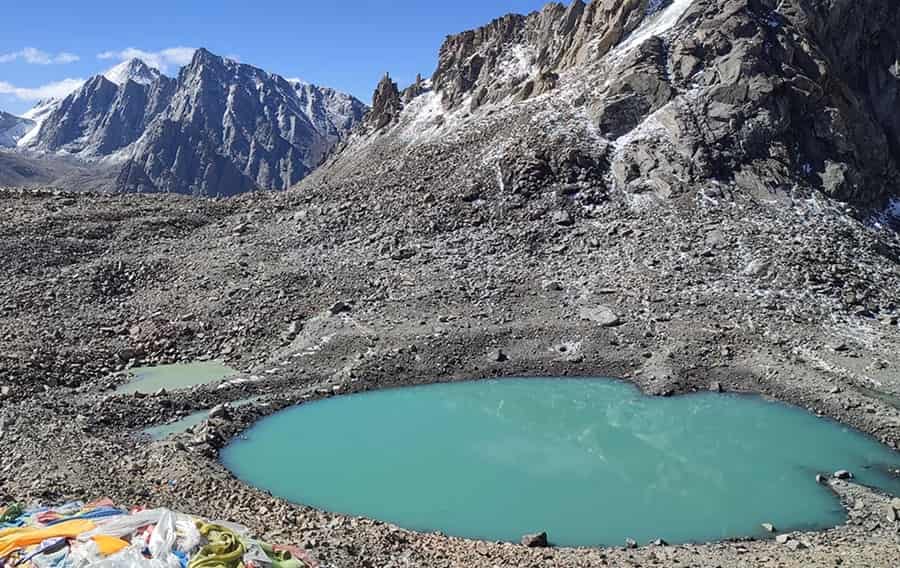
Gaurikund is a perfectly round body of water associated with Lord Shiva’s consort, Mata Parvati. According to legend, Maa Parvati is the Goddess of Fertility and Divine Power. Mata Parvati bathed at Gaurikund every day, according to Hindu mythology. The Lake of Purity and Compassion is named after this blue Kund or reservoir. Gaurikund is thought to be a spiritually significant sight while on the Kailash Mansarovar Yatra. A few drops of Gaurikund Jal can aid in the treatment of illness and the purification of the soul.
Lord Ganesha is said to have been created by bubbles created while Mata Parvati bathed in Gaurikund. Mata Parvati stationed her son Ganesha at the entrance to Gaurikund to protect it from invaders after his birth. Lord Ganesha loved his mother so much that he once stopped Lord Shiva from entering Gauri Kund to meet Mata Parvati. This enraged Lord Shiva to the point of decapitating and killing his own son. Maa Parvati begged Lord Shiva to resurrect their son Ganesha. Lord Shiva resurrected Lord Ganesha by replacing Ganesha’s head with that of an elephant. This made Maa Parvati very happy. On the second day of Mount Kailash Parikrama, you can see Gaurikund at an elevation of 5600 meters. The second-day Parikrama from Dirapuk to Zuthulpuk on Mount Kailash is 22 kilometers long. After trekking 6 kilometers uphill from Dirapuk, we arrive at Dolma La Pass, the highest point of the Kailash Mansarovar Yatra. Gaurikund can be seen to the right after passing through Dolma La Pass, about 400-500 meters.
Rakshas Tal
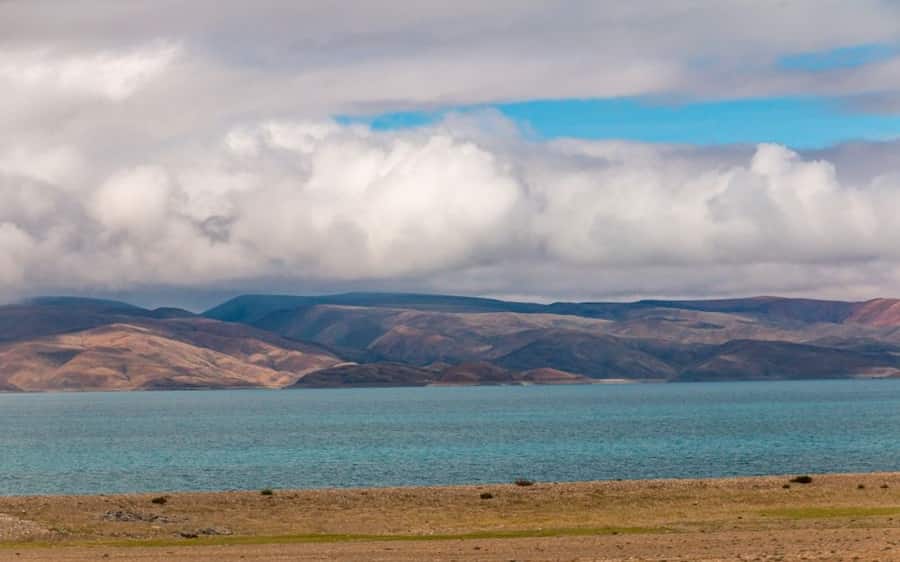
Rakshastal, meaning “Lake of Demons” or “Lake of Devils,” lives up to its name. This crescent-shaped saltwater lake is believed to have been a meditation site for Ravana, the Demon King, where he paid homage to Lord Shiva. In Tibetan, Rakshastal is known as Langar Cho or Lhanag Tso, translating to “the dark lake of poison.” Various legends surround the creation of Rakshastal, as detailed below:
Rakshastal was created by Ravana, who worshiped Lord Shiva. Every day, Ravana severed his own head and offered it to Lord Shiva. Lord Shiva appeared on the tenth day, impressed by his act of sacrifice, and blessed the demon king.
According to another legend, Ravana was a devout follower of Lord Shiva. To fulfill his wish, he went to Mount Kailash. Before visiting Mount Kailash, he bathed and meditated at Rakshastal. Rakshastal, according to mythology, was full of negativity, and when Ravana immersed himself in it, his mind became filled with much negativity. As he approached Kailash Parvat, he noticed Mata Parvati. Lord Shiva was moved by Ravana’s devotion and asked him for his wish, which he gave to Mata Parvati. According to legend, he had this inappropriate desire after bathing in Rakshastal. However, there is no conclusive evidence as to whether this wish was made before or after the dip.
The Tibetans believe that the demon king Ravana wished for Lord Shiva to migrate to Lanka. He meditated deeply and worshiped Lord Shiva at Rakshastal to please him. Lord Shiva, on the other hand, has stated that he will not leave Kailash Parbat. Ravana tried to lift the sacred mountain, but Lord Shiva pressed down on it, injuring Ravana’s thumb. Because he was in excruciating pain, Ravana began reciting Shiv Tandav Stotram. Lord Shiva was moved by his actions and bestowed the Shivalinga upon him as a symbol to carry to Lanka. Rakshastal Lake is about 50 kilometers west of Lake Mansarovar and west of Mount Kailash. Dola, Lachato, Topserma, and Dosharba are the four islands that make up Rakshas Tal. It is located in Tibet’s Ngari Province at an elevation of 4500 meters.
Nandi Parvat
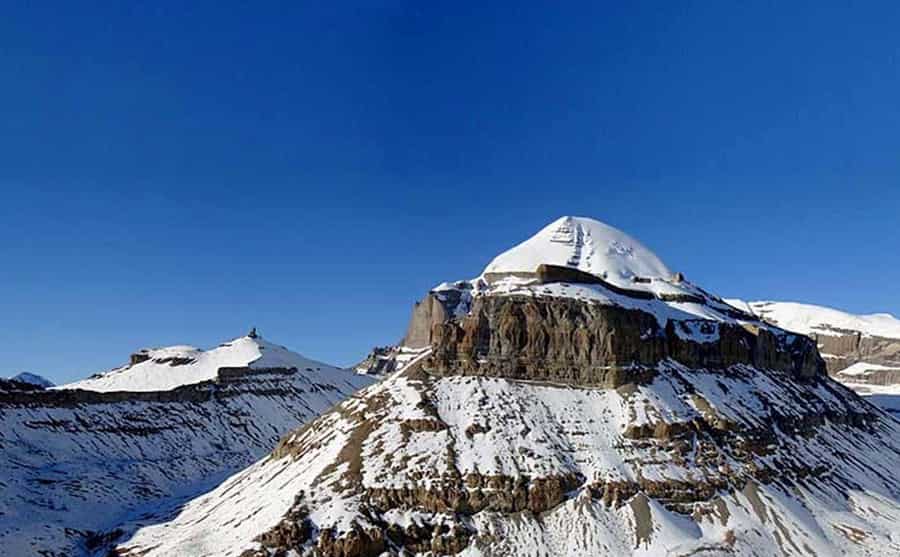
Nandi Parvat is regarded as one of the most important peaks in the Kailash Manasarovar Yatra, and as such, it is of great importance. Devotees from all over the world travel to join the Kailash tour in order to see Lord Shiva’s heavenly abode, Mount Kailash. This range, considered to be a highly spiritual peak with a large number of followers and that too beyond limits, leaves no devotee unsatisfied with any of its characteristics.
Nandi Ji is regarded as Lord Shiva’s messenger. Lord Shiva, according to legend, is deep in meditation on Mount Kailash and cannot hear the common man’s wishes. Nandi Ji hears all of the Bhole Bhakts’ wishes and relays them to Lord Shiva. The Kailash Mansarovar yatra is incomplete unless the Nandi Parvat is worshiped. Nandi ji is revered as the Dharma’s protector and a symbol of courage, faith, and justice. The Nandi Parvat astounds because such a creation at this height could not have been made by man. It is a magical mountain entirely formed by nature.
Mount Kailash’s South Face is directly in front of the Nandi Parvat. It can be seen from Yam Dwar and is close to the Saptarishi caves.
Suggested Packages:
- VIP Kailash Mansarovar Yatra by Private Helicopter
- Kailash Mansarovar Yatra by Helicopter from Kathmandu
- Kailash Mansarovar Aerial Darshan by Flight
Saptarishi Cave
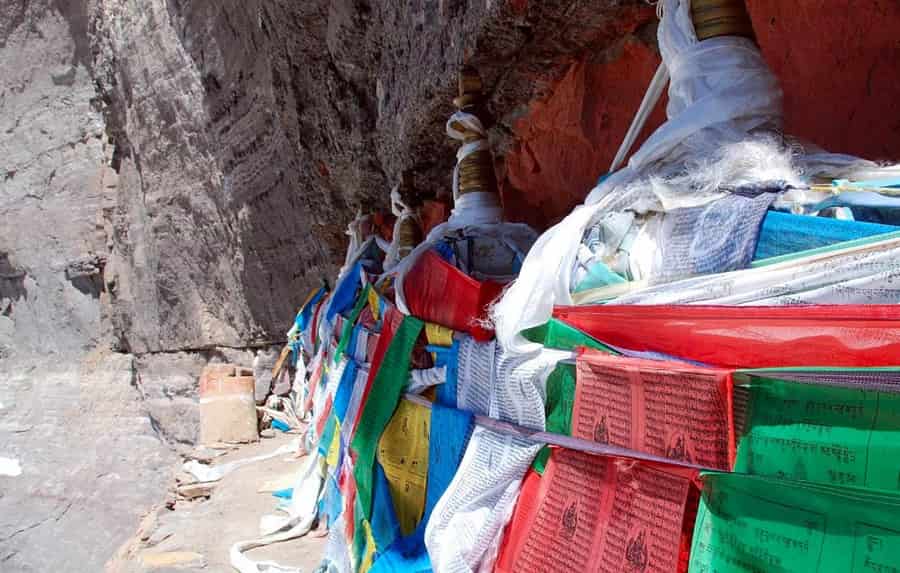
The Saptarishi Cave is thought to have been the home of seven rishis who were ardent Lord Shiva worshippers. The seven divine sages are Bharadwaja, Bhrigu, Gautama, Atri, Kashyapa, Vishwamitra, and Vasishtha. Gengta Monastery manages and cares for 13 Chortens or the Buddhist shrines in the area. A long horizontal crack divides the Saptarishi cave. Its sole purpose is to keep snow and rocks from falling off the cave’s 13 well-secured Chortens and to protect them from damage from the outside world. The walls of these caves are painted red according to Tibetan tradition.
The axis mundi, or center of cosmic creation, is regarded as Mount Kailash, and the seven divine sages are regarded as the seven basic elements that comprise the universe, namely water, air, nature, sky, fire, spirit, and stone. As a result, the Saptarishi of the Himalayas and Kailash Mountain have a strong bond. The Saptarishi, who possessed psychic abilities, could travel throughout the locus and communicate with the devas. The Saptarishi communicated with Mount Meru in order to unlock Yamloka’s gates and find a way to slay and kill the demon Kalkambha. They merged into a unified form known as Brahmastra or the Mass Destruction Weapon in order to destroy the demon king and restore peace and harmony to the earth. Saptarishi Caves are located at an elevation of approximately 6000 meters in Mount Kailash’s Inner Parikrama, near Nandi Parvat. The Saptarishi Cave trek is the most difficult trek in Mount Kailash’s Inner Kora.
Tirthpuri
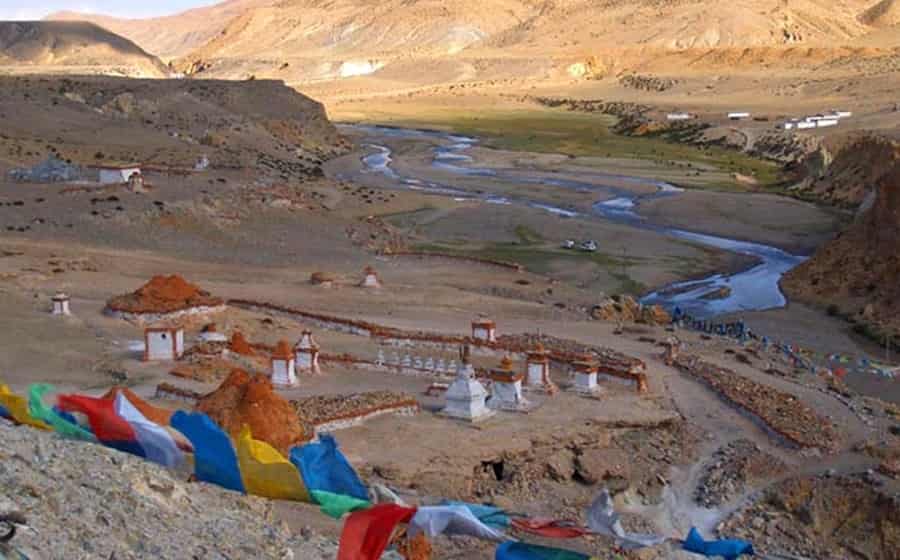
Tirthpuri is a Buddhist pilgrimage site on the Sutlej River that has long been regarded as one of the most important sites near the holy Mount Kailash. Visitors to Kailash regard a visit to the pious Tirthapuri as extremely important, and according to tradition, devotees present there first circumambulate Lake Manasarovar, then Mount Kailash, and finally the Buddhists’ hub Tirthapuri. Western Tibet has designated it as the third holiest pilgrimage site, so it holds a special place in everyone’s heart, especially Buddhists, and is visible as medicinal hot springs and a geyser.
In addition to worship and other events in Tirthapuri, devotees are looking for pear-shaped relics, which are most commonly seen during the spring season. On full moon days, people go out of their way to find them, especially on land and in water. These deposits are said to bring good luck and fortune to their owners, and they can also be used to treat a variety of diseases. The one-hour Tirthapuri Kora ride will take you through some of the most picturesque and beautiful scenery. Tirthapuri is 90 kilometers west of Mansarovar Lake and Darchen town, where a few hour drive leads further west to a barren and desolate area at Tirthapuri situated within eroded high red cliffs and canyon with an overnight stop.
- Suggested Tour: Kailash Mansarovar Yatra Helicopter Packages
COMMENTS